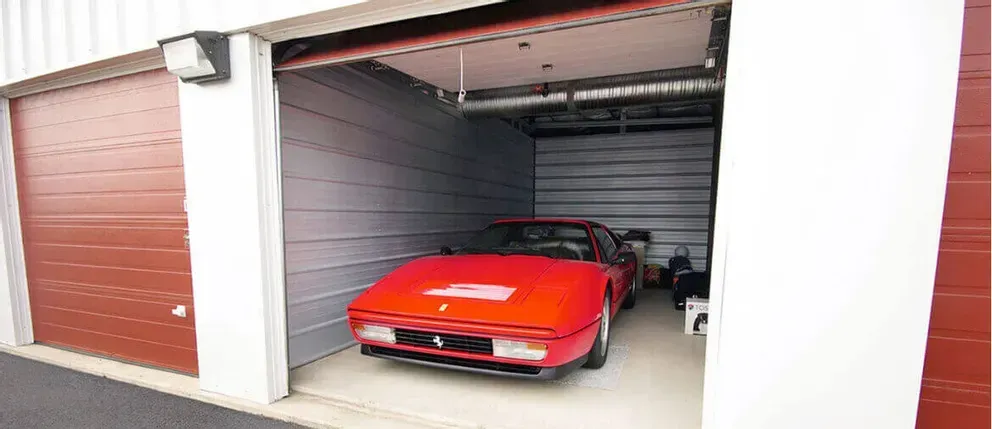Tips for Effective Long-Term Car Storage
Storing a car for an extended period can be tricky, but with the right approach, you can ensure it stays in great shape and ready to hit the road when needed. Whether you’re heading off on a long trip, dealing with a seasonal vehicle, or simply don’t have room to park it daily, knowing how to properly store your car can save you from a host of potential headaches and costly repairs. Let's dive into some effective tips that will keep your car protected and in optimal condition during its time off the road.
Read more aboutSecurity tips for long-term storage!
Clean the Car Inside and Out
Before putting your car into long-term storage, give it a thorough cleaning both inside and out. Washing the exterior removes dirt, grime, and road salt that can cause rust and paint damage over time. Inside, vacuum and clean all surfaces to prevent mold, mildew, and odors from developing. Don’t forget to remove any trash or food items that might attract pests. A clean car not only stays in better condition but also ensures you come back to a fresh and inviting vehicle.
Keep Your Battery Charged
Maintaining your car’s battery charge is crucial during long-term storage to prevent it from dying. Use a battery maintainer or trickle charger to keep the battery at an optimal charge level. If you don’t have access to these devices, consider disconnecting the battery to prevent drainage. Regularly starting the car and letting it run for a few minutes can also help keep the battery charged and ensure other components remain in good working order.
Change Your Oil
Changing your oil before storing your car is a key step in maintaining engine health. Fresh oil helps prevent the buildup of contaminants and reduces the risk of corrosion inside the engine. Old oil can become acidic and damage engine parts over time, especially during long periods of inactivity. By starting with clean oil, you ensure that your engine stays lubricated and protected, ready for smooth operation when you take your car out of storage.
Choose the Right Lock
Selecting the right lock for your car during long-term storage is essential to ensure its security. Opt for high-quality, heavy-duty locks that are designed to withstand tampering and provide robust protection. Consider using a steering wheel lock or a tire lock as an added deterrent against theft. Additionally, investing in a comprehensive car alarm system can offer an extra layer of security, alerting you to any unauthorized access attempts. By choosing the right lock, you significantly reduce the risk of theft and ensure your car remains safe throughout its storage period.

Elevate Your Car with Jacks
Using jacks to elevate your car during long-term storage can prevent flat spots on your tires and reduce stress on the suspension. Flat spots occur when the weight of the car presses down on the same part of the tires for an extended period, potentially causing permanent damage. Elevating the car also helps protect the tires from temperature fluctuations and ground moisture. Make sure to use quality jack stands and place them at the proper points under the car to ensure stability and safety.
Protect the Car from the Elements
When storing your car long-term, it's crucial to shield it from the elements to prevent damage. Ideally, store the car in a garage or under a carport to shield it from rain, snow, and direct sunlight. If a covered space isn't available, use a high-quality car cover that fits snugly to keep out dust, debris, and moisture. Additionally, consider applying a coat of wax to the exterior to provide an extra layer of protection against UV rays and environmental pollutants. Taking these precautions helps maintain your car's exterior finish and prevents deterioration over time.
Keep the Car Insured
Maintaining car insurance coverage is essential even when your car is in long-term storage. Insurance protects your vehicle against unexpected events such as theft, vandalism, or damage from natural disasters. It also provides liability coverage in case someone is injured or property is damaged while your car is stored. While you may not be using the car regularly, having insurance ensures you're financially protected from potential risks. Consider adjusting your coverage or exploring storage insurance options to suit your car's storage needs and provide peace of mind.
Read here aboutWhat to do when car won't open from inside!
Conclusion
Maintaining car insurance coverage is essential even when your car is in long-term storage. Insurance protects your vehicle against unexpected events such as theft, vandalism, or damage from natural disasters. It also provides liability coverage in case someone is injured or property is damaged while your car is stored. While you may not be using the car regularly, having insurance ensures you're financially protected from potential risks. Consider adjusting your coverage or exploring storage insurance options to suit your car's storage needs and provide peace of mind.
Call Us Any Time!






